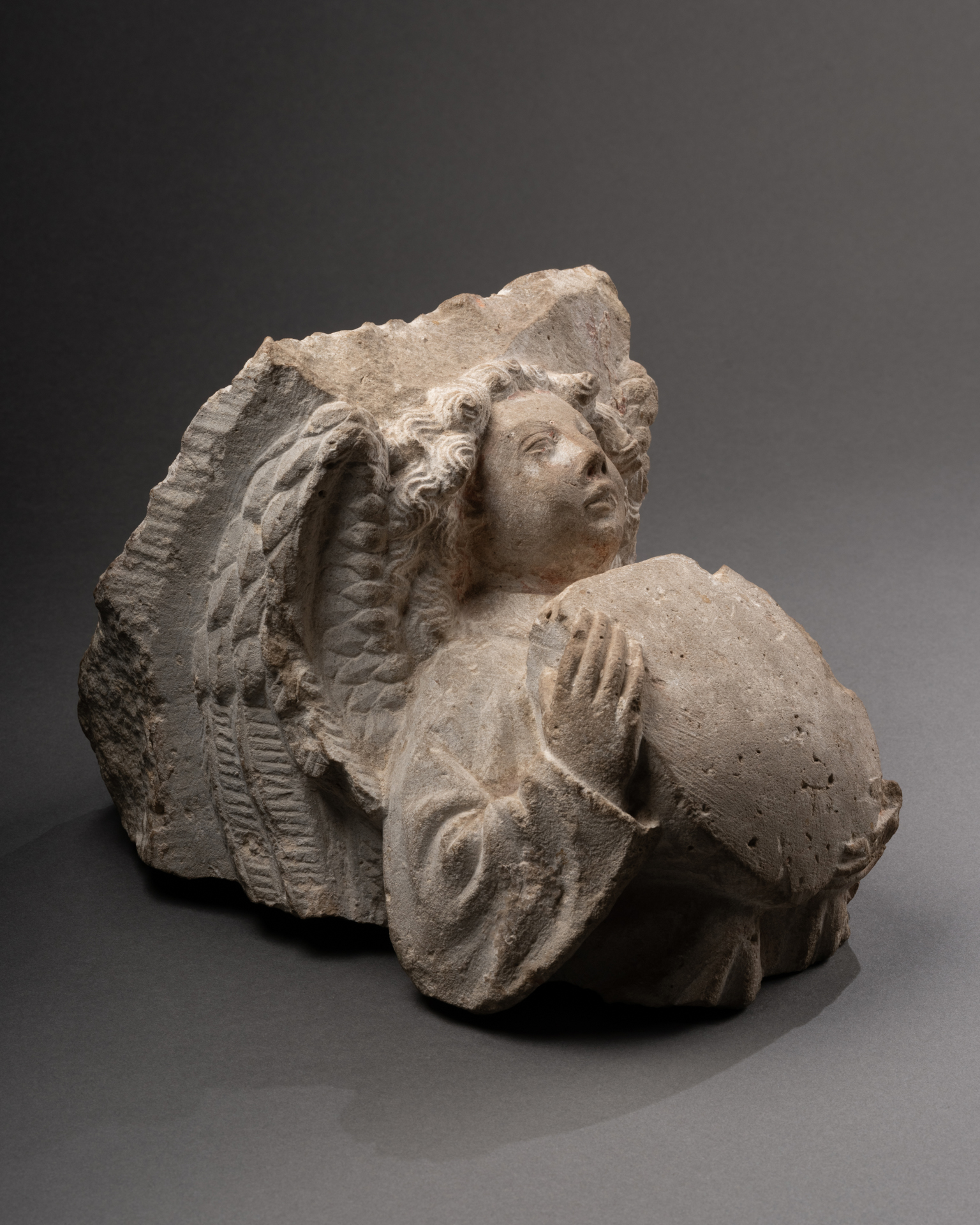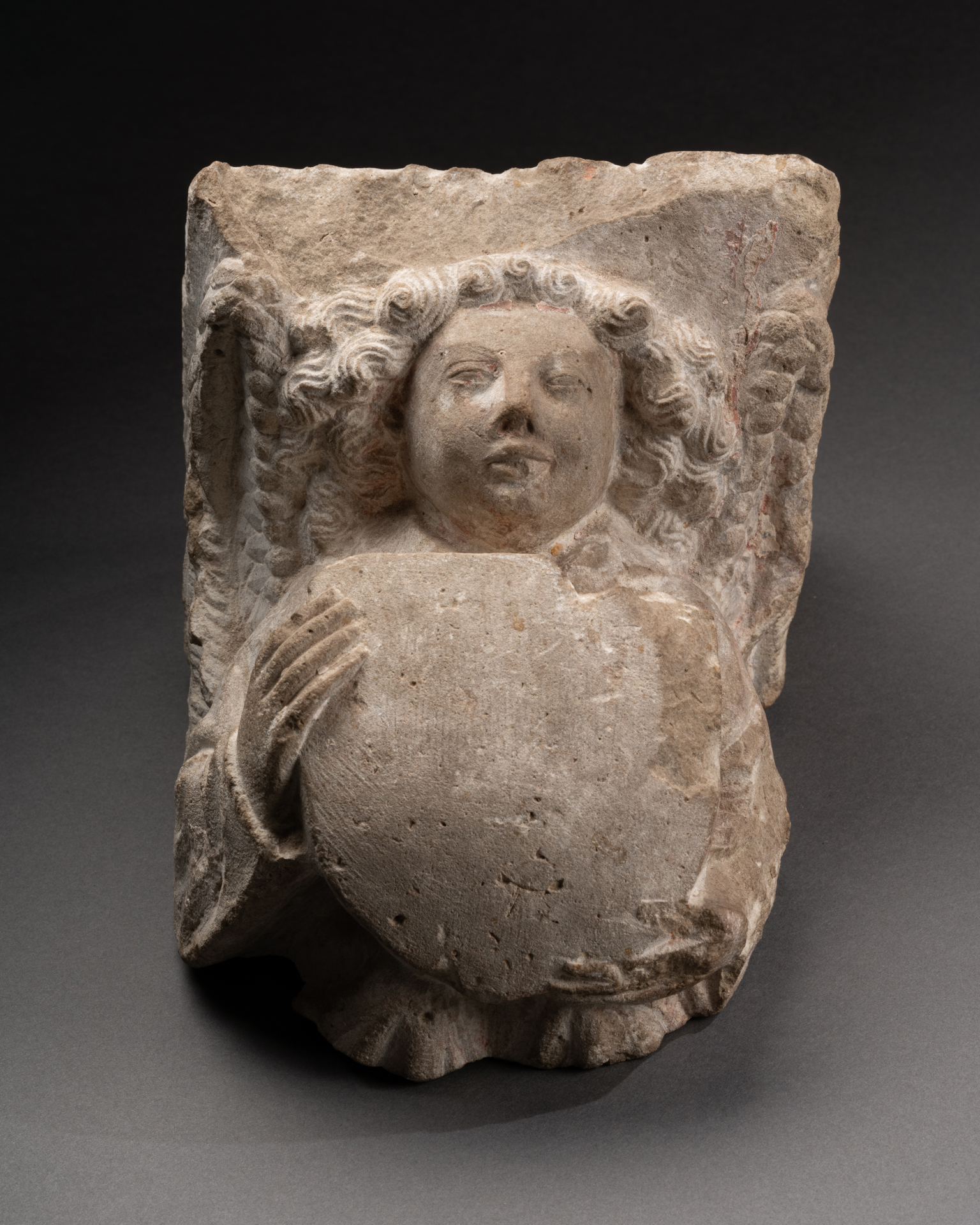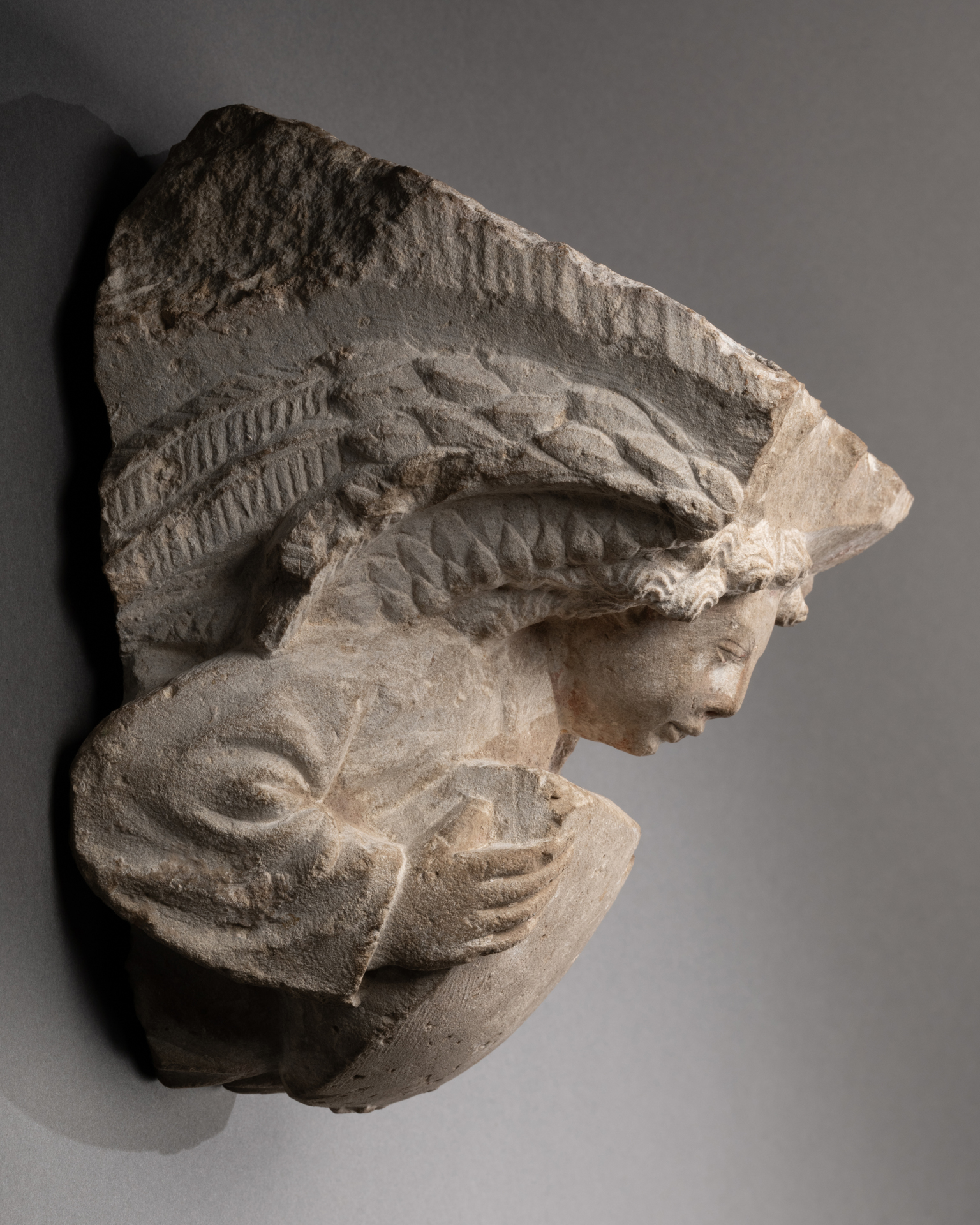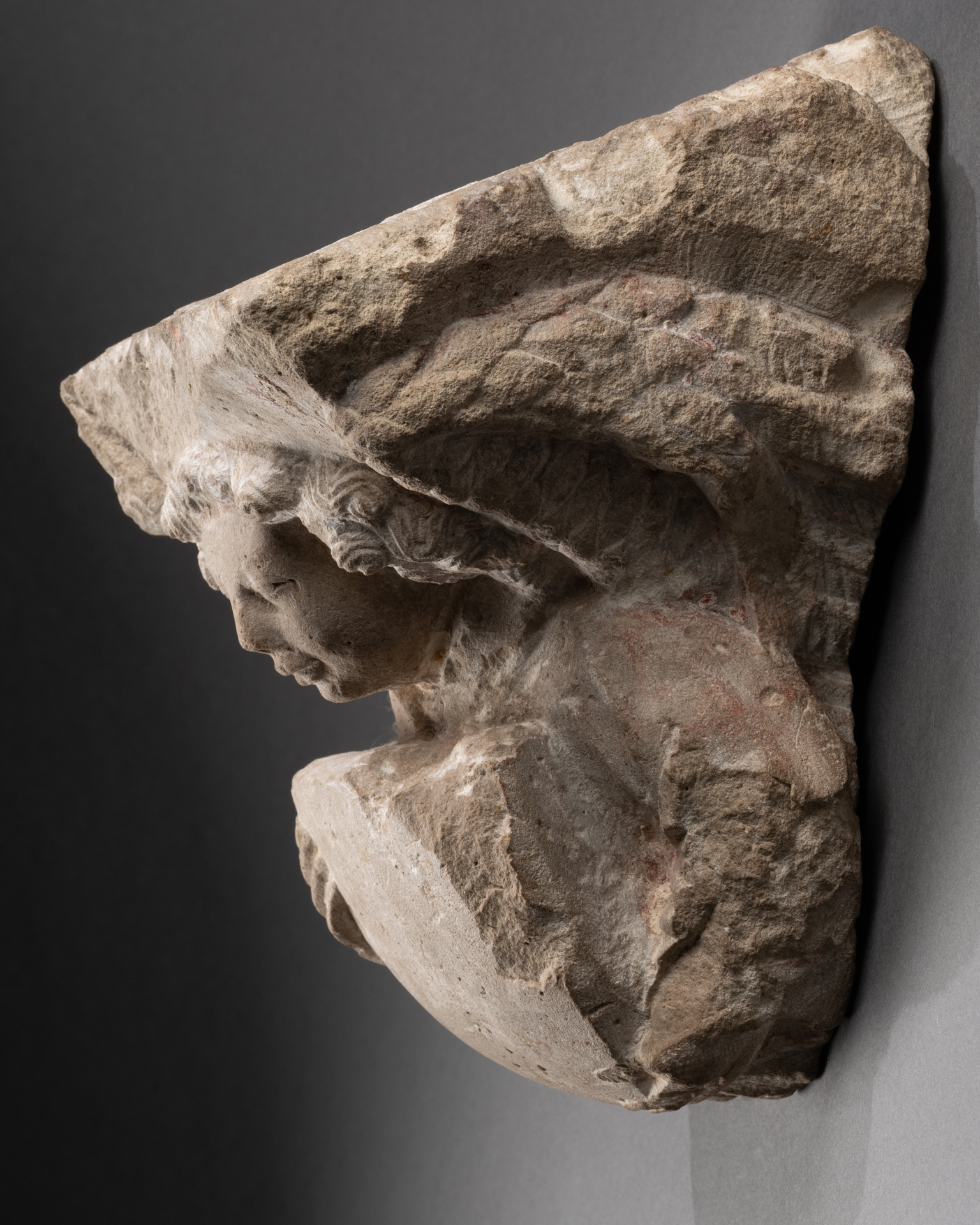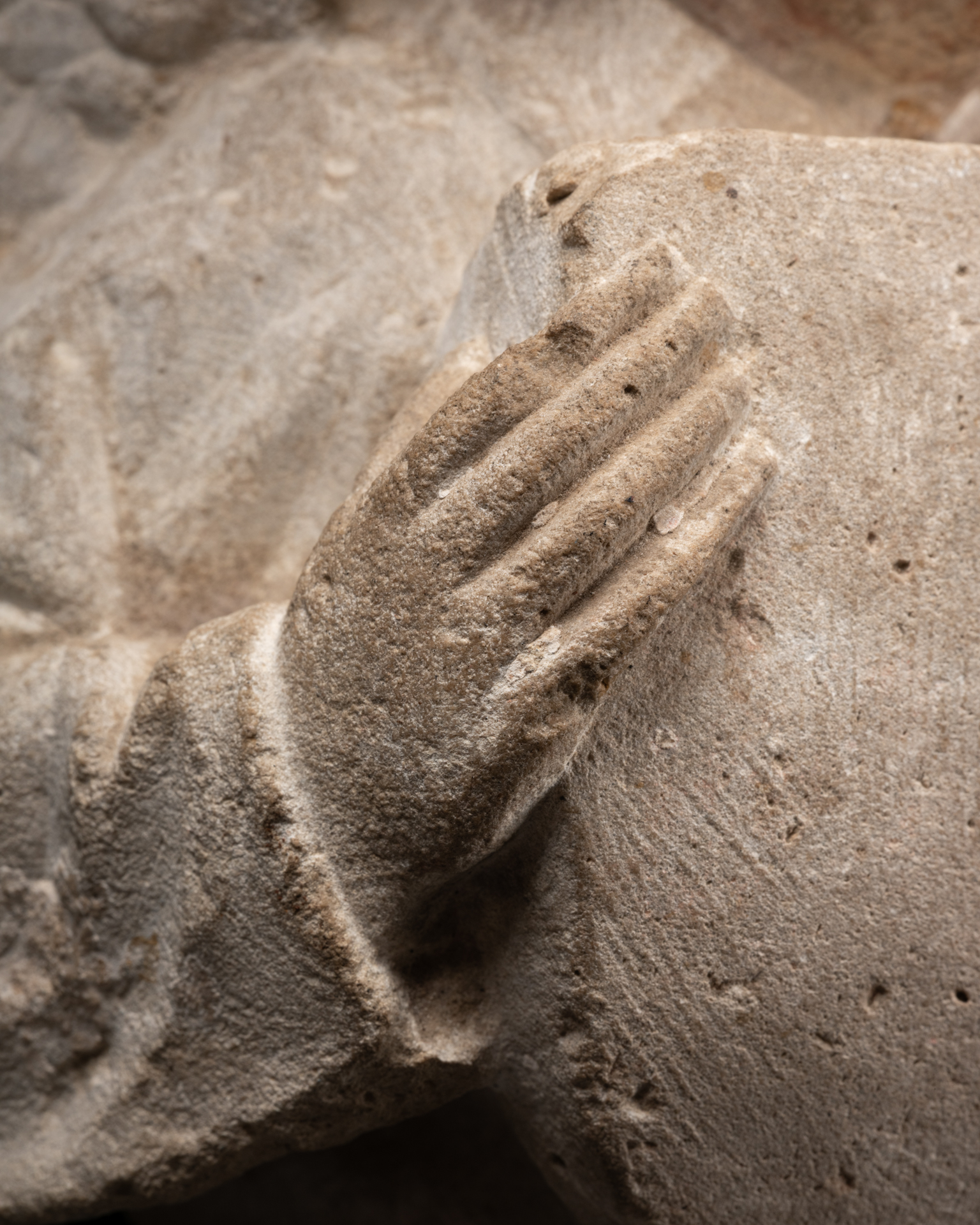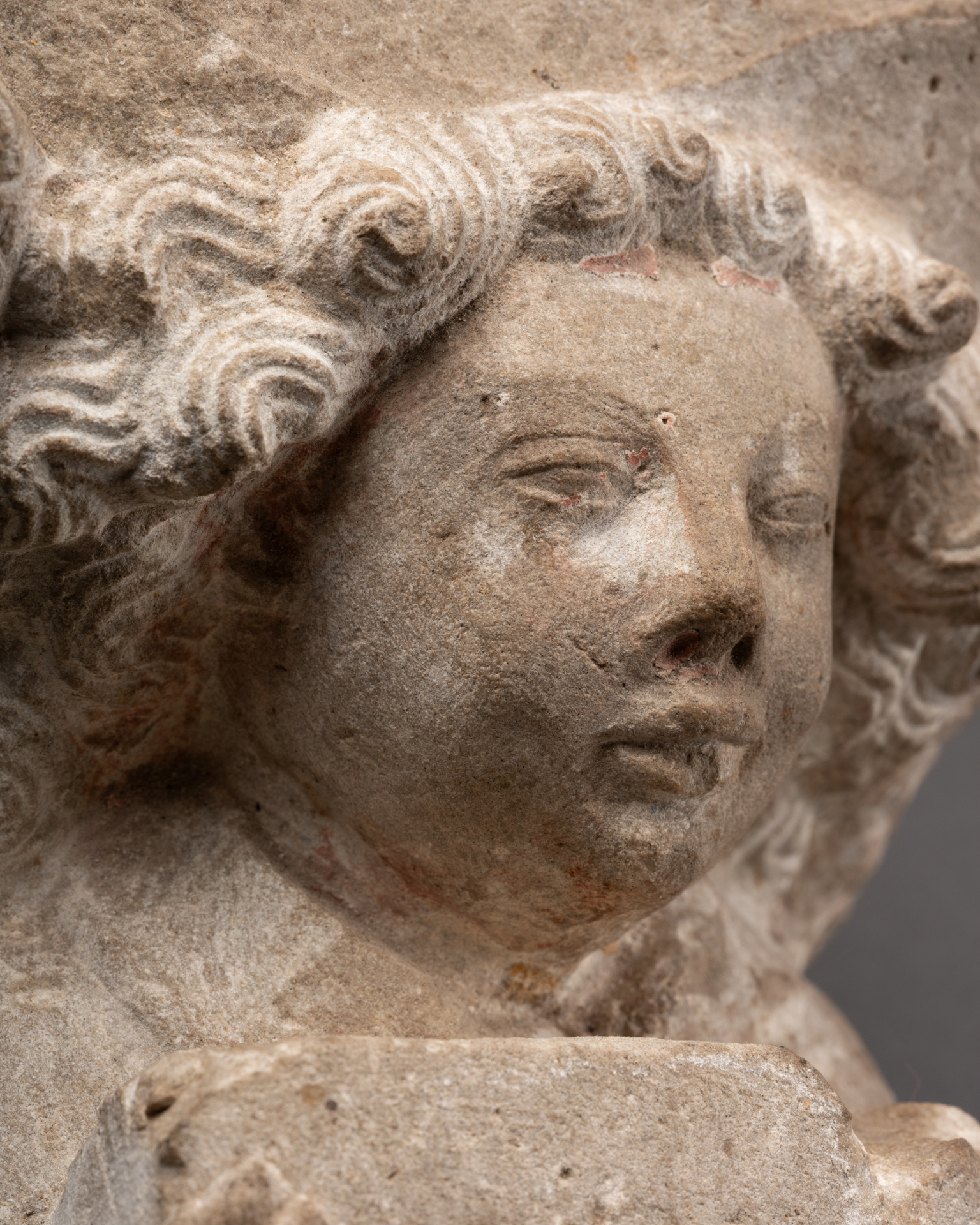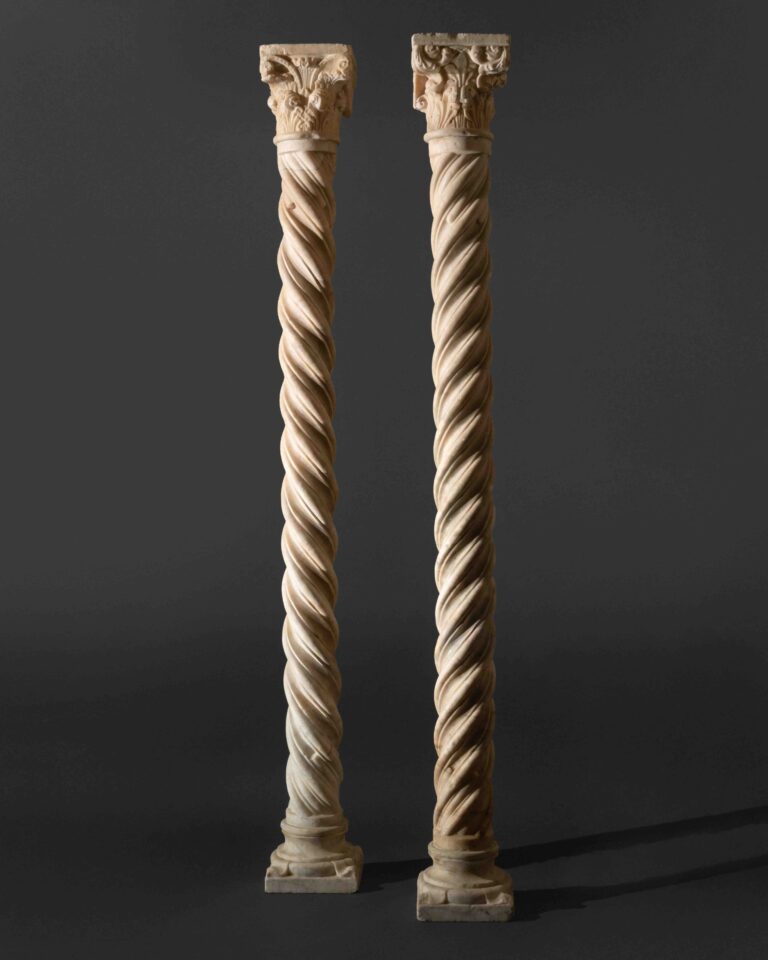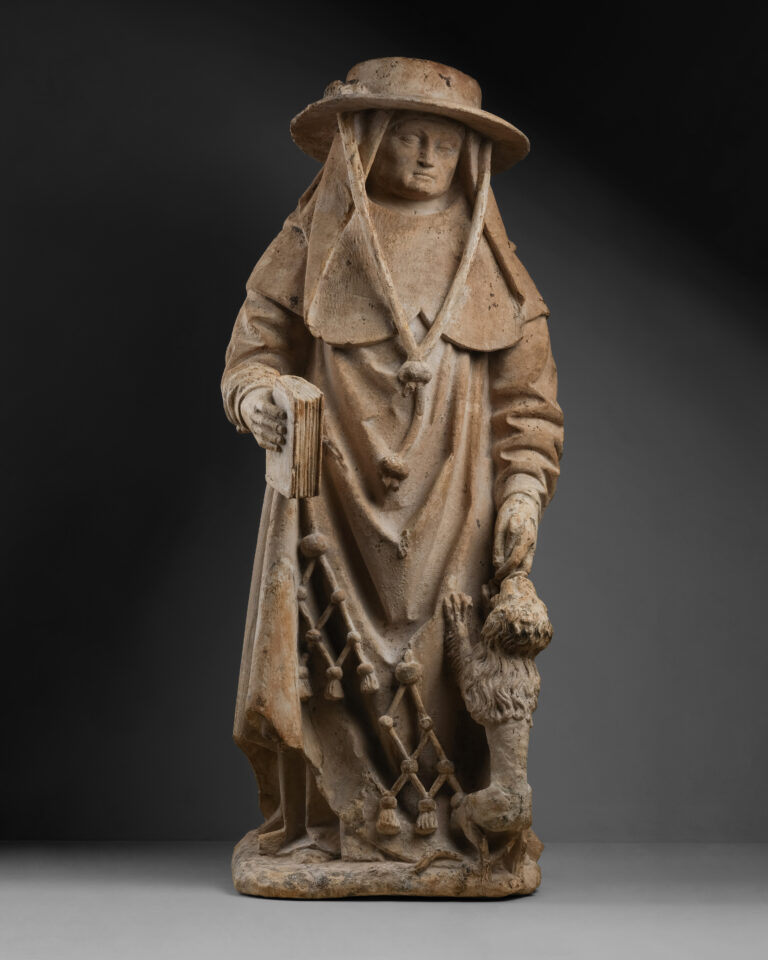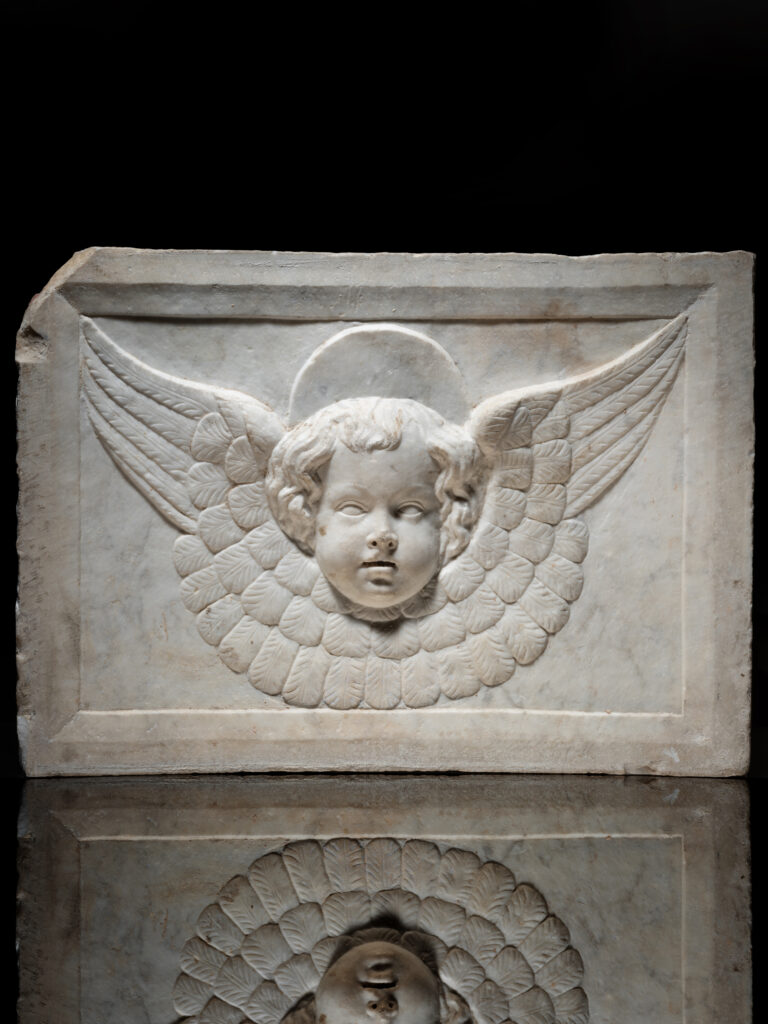This intricately carved stone corbel from the 15th century exemplifies the refined naturalism and detail characteristic of the Burgundian Netherlands during the later Middle Ages. It portrays an angel’s bust with delicately feathered wings and flowing hair, holding a triangular heater-shaped shield against his chest. Despite its compact dimensions, the corbel reveals a masterful command of form and material, embodying the refined naturalism and attention to detail emblematic of the Burgundian Netherlands in the later Middle Ages.
Particularly noteworthy is the exceptional preservation of the sculpture and the nuanced execution of its details. The angel’s hair and wings, rendered with skillful precision, showcase the talent of the anonymous sculptor. These features imbue the work with a contemplative dignity and a quiet spiritual resonance.
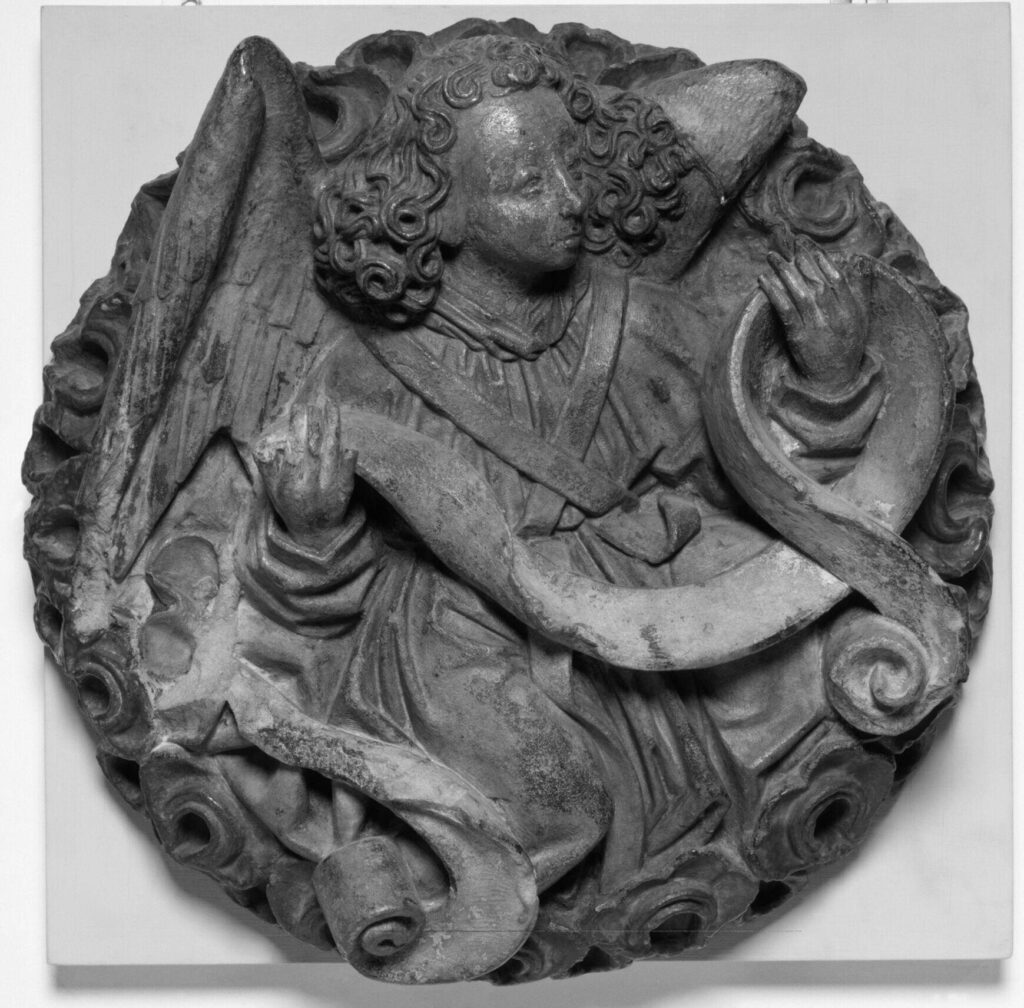
The angel’s visage—marked by almond-shaped eyes, full cheeks, a small, serene mouth, and framed by a crown of tightly coiled locks falling gracefully to the neck—clearly reflects Northern European artistic traditions. However, this is tempered by a certain softness and grace that point to a Southern influence. The square jaw, rounded chin, dense curling hair, and eyes shaped like a circumflex accent, with subtly swollen lower eyelids, evoke close stylistic parallels with Burgundian sculpture of the 15th century.
The angel’s calm demeanor and the finely detailed curls and feathered wings indicate it was created in the Burgundian Netherlands—a region that included present-day Belgium, the Netherlands, Luxembourg, and northern France, governed by the dukes of Burgundy from the late 14th to the late 15th century. During the reigns of Philip the Bold, Philip the Good, and Charles the Bold, the area became a center of artistic innovation and elite support, with sculpture serving as a primary means to convey dynastic pride and religious devotion.
Corbels such as this served both architectural and symbolic functions. Positioned beneath vault ribs, projecting cornices, or structural elements within Gothic ecclesiastical, civic, or domestic architecture, they frequently featured iconographic programs including angels, saints, or heraldic devices. This particular example may have originated in a municipal or religious context, possibly serving as a support for a saint’s statue or heraldic emblem.
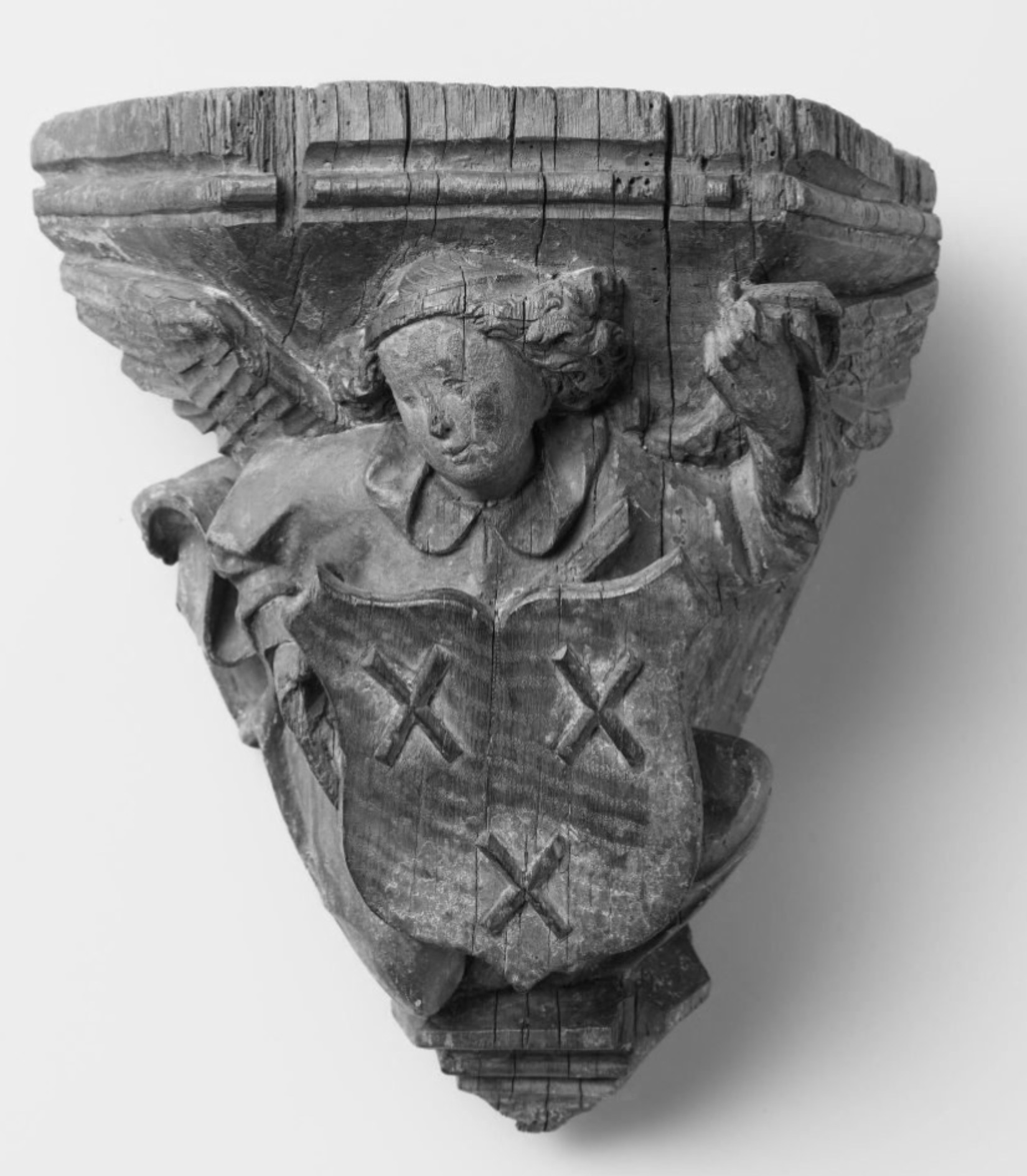
Beyond their structural role, corbels like this one conveyed profound symbolic meaning. The image of an angel bearing a coat of arms would have powerfully reinforced the idea of divine sanction and protection over the building’s patron—be it a noble lineage, religious order, or civic institution. Such iconography reflects the deeply entwined relationship between earthly power and celestial favor, a foundational theme of late medieval political theology.
Similar sculpted corbels and keystones are present in major institutional collections. Noteworthy examples include the keystone with an angel from the Zelem Charterhouse near Diest now showcased at the V&A and the Angel corbel with the Coat of Arms of Breda displayed at the Rijksmuseum.
